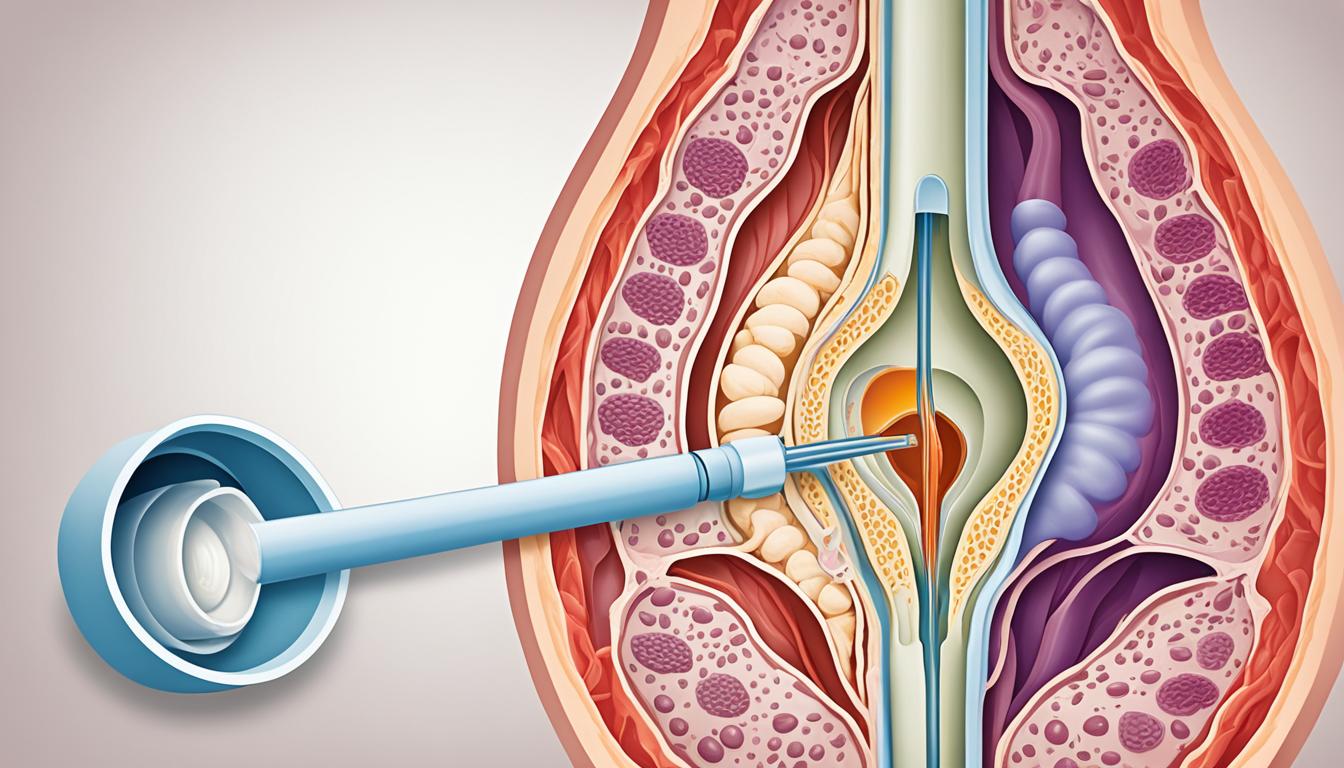Reflux vesicoureteral (VUR) disease happens when urine goes the wrong way, from the bladder back to the ureters or even kidneys. It affects mostly infants and young kids, bringing the risk of UTIs and harm to the kidneys. Causes can be from birth (congenital) or from problems that appear later, like blockages.
VUR often shows itself with UTIs, issues in the bladder or bowels, and scarring on the kidneys. Spotting it early is vital to stop further issues and find the best ways to manage it. Doctors use tests like an ultrasound and cystourethrogram to check how serious it is.
How VUR is treated depends on how bad it is and the patient’s age. Some cases can get better by themselves, but others might need drugs or even surgery. Stem cell therapy is also becoming a hopeful option for VUR treatment.
Key Takeaways:
- Reflux vesicoureteral (VUR) disease involves the backward flow of urine from the bladder to one or both ureters.
- VUR is most common in infants and young children and can lead to UTIs and kidney damage.
- Primary VUR is usually congenital, while secondary VUR can be caused by blockages or nerve problems.
- Common symptoms of VUR include UTIs, bladder or bowel problems, and kidney scarring.
- Diagnosis of VUR typically involves imaging tests such as abdominal ultrasound and voiding cystourethrogram.
What is Vesicoureteral Reflux?
Vesicoureteral reflux (VUR) makes urine flow back from the bladder to the kidneys or ureters. This is not the usual direction for urine to go. The problem arises when urine doesn’t go one way down the urinary tract but reverses instead. This can cause issues in the body.
VUR is rated from 1 to 5, showing how serious it is. A grade 1 means a very small amount of urine goes into the ureters. On the other hand, a grade 5 describes a big issue where both ureters and the kidneys are involved. Many times, VUR happens since birth (congenitally) but can also be due to external causes like blockages or nerve problems.
This picture shows the normal and wrong way urine travels in the body. It helps us see and understand how VUR changes the flow of urine and affects the ureters and kidneys.
Causes and Symptoms of Vesicoureteral Reflux
Vesicoureteral reflux (VUR) has different causes. Primary VUR is usually something a person is born with. It happens when the valve doesn’t work right and lets urine go back into the ureters. Secondary VUR can occur due to blockages or nerve issues. When urine flows the wrong way, it can create problems leading to symptoms and complications.
Causes of Vesicoureteral Reflux
Primary VUR often links back to a malfunctioning valve. This problem starts from birth. Babies and young kids are more likely to have it.
Secondary VUR has several causes:
- Obstructions in the urinary tract, like stones or tumors, can mess up urine’s right flow.
- Nervous system problems might alter how the bladder and ureters work together, causing urine to flow wrongly.
- When the bladder doesn’t work as it should, it might not fully empty. This can make urine go the wrong way.
Symptoms of Vesicoureteral Reflux
VUR can cause UTIs from urine going the other way. Signs of these UTIs are:
- Needing to pee a lot.
- Feeling burning when you pee.
- Seeing blood in your pee.
- Having a fever.
Not treating these UTIs can hurt the kidneys over time. This might lead to more health problems later on.
Doctors use tests to check for VUR and what’s causing it. Things like ultrasound and voiding cystourethrogram show the VUR’s grade and how bad it is. Then, they pick the best treatments.
Diagnosis and Treatment Options for Vesicoureteral Reflux
Doctors use tests like abdominal ultrasound and voiding cystourethrogram to diagnose vesicoureteral reflux (VUR). These tests show the grade and how serious it is. This information is crucial for choosing the right treatment.
The treatment for VUR changes depending on the patient’s age, symptoms, and the reflux’s grade. Some mild cases get better on their own. But for more serious cases, medical help may be needed.
Often, doctors prescribe medicine to prevent UTIs and ease VUR symptoms. Surgery might be needed to fix the problem between the bladder and ureter. It’s always best to talk to a doctor about the right treatment for you.
Right now, stem cell therapy is at the forefront of new VUR treatments. Researchers believe stem cells could help fix the urinary tract. This gives hope for better treatments in the future.
FAQ
Q: What is vesicoureteral reflux (VUR)?
A: Vesicoureteral reflux happens when urine flows the wrong way. It goes from the bladder back up to the ureters or the kidneys.
Q: What are the symptoms of VUR?
A: For many with VUR, they often get UTIs. Some have trouble with their bladder or bowels. Others develop scars on their kidneys.
Q: What causes vesicoureteral reflux?
A: The reason behind VUR can be different. It might start with birth defects (congenital) or come later due to issues like blockages or nerve problems.
Q: How is vesicoureteral reflux diagnosed?
A: Doctors diagnose VUR using special tests. These include an abdominal ultrasound or a voiding cystourethrogram. The tests help them know how bad it is.
Q: What are the treatment options for vesicoureteral reflux?
A: There are different ways to treat VUR. The method often depends on how serious it is. Treatments can include medicines or even surgery. There’s new hope with stem cell therapy too.

